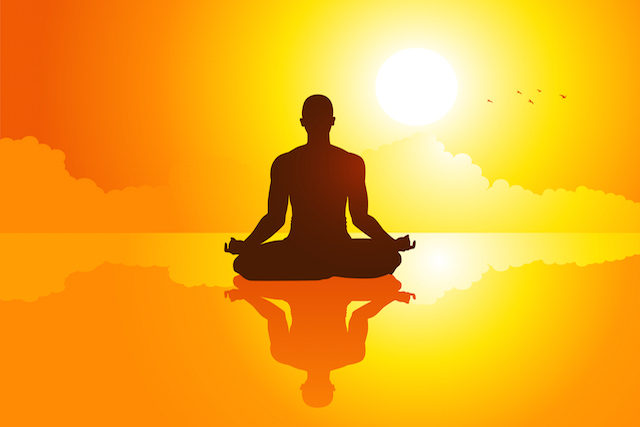Boost Your Wellness by Learning How to Meditate?
How to Meditate: A Step-by-Step Technique to Achieving Mindfulness and Tranquility
Meditation serves as a powerful tool for attaining mindfulness and psychological tranquility in a busy globe. By comprehending the essential concepts and methods entailed in reflection, individuals can grow a practice that improves their total well-being.
Understanding Meditation
Comprehending meditation entails grasping its basic principles and methods, which work as the foundation for the technique. At its core, meditation is a mental exercise focused on promoting relaxation, constructing internal power, and establishing empathy and insight. The method motivates people to focus their focus, frequently with strategies such as deep breathing, visualization, or concept repetition.
Meditation can be categorized into different designs, consisting of mindfulness, transcendental, and loving-kindness meditation, each with distinctive functions and methods. Mindfulness meditation highlights present-moment recognition and non-judgmental observation of feelings and thoughts, while transcendental reflection entails using specific mantras to go beyond regular mind. Loving-kindness reflection focuses on establishing an attitude of love and empathy towards oneself and others.
No matter the strategy used, the primary goal stays consistent: to grow a much deeper understanding of the mind and its patterns. This self-awareness promotes psychological strength, clarity of idea, and a profound feeling of tranquility (How to meditate?). By understanding these concepts and strategies, individuals lay the groundwork for an effective meditation method that can substantially enhance their general well-being
Planning For Your Technique
Prior to starting your reflection method, it is vital to develop a setting helpful to concentrate and relaxation. Select a quiet area where you are not likely to be interrupted. This could be a corner of a space, a yard, or any kind of location that stimulates a feeling of tranquility. Make sure that the location is cost-free and clean of mess, as a tidy environment can help clear the mind.
Take into consideration the lighting, as all-natural light can enhance your state of mind and power. Soft, warm lights is typically extra relaxing than harsh fluorescent lights. Additionally, select a comfy temperature, ensuring that you are neither too hot neither too cold.
Integrating components that promote harmony can further enhance your experience. This might include soft cushions or blankets for comfort, as well as relaxing aromas from necessary oils or incense. It can likewise be beneficial to have actually a timer established for your meditation session to stop interruptions from clock-watching.
Standard Meditation Strategies

An additional effective strategy is body scan meditation. This involves psychologically scanning your body from head to toe, seeing any areas of tension or discomfort and knowingly loosening up those muscle mass. This technique cultivates a much deeper link between your body and mind.

Last but not least, loving-kindness meditation concentrates on growing concern in the direction of yourself and others. Quietly repeat phrases of goodwill, boosting emotional well-being and interconnectedness. Each of these strategies functions as a structure for your reflection trip, allowing you to locate the technique that link reverberates ideal with your personal technique.
Maintaining Emphasis and Mindfulness

Establishing a devoted reflection area can improve the capacity to keep mindfulness. A silent, uncluttered setting lessens diversions, enabling deeper immersion in the technique. Additionally, establishing a time frame can help manage expectations; starting with shorter sessions may alleviate the shift into longer practices.
Using techniques such as body scanning or observing experiences can additionally reinforce mindfulness. These approaches motivate specialists to stay existing and engaged with their physicality, securing their interest in the moment. Normal practice is important; the brain builds resilience over time, developing a more powerful ability for focus.
Incorporating Reflection Into Day-to-day Live
Integrating meditation right into daily life can change routine tasks into chances for mindfulness and self-reflection. By integrating mindfulness methods into common jobs, people can cultivate a better sense of visibility and harmony amidst the busyness of day-to-day life.
Begin by recognizing minutes throughout your day where you can pause and exercise mindfulness. During your early morning commute, emphasis on your breath or the feelings of the setting around you. In the kitchen area, approach food preparation as a meditative technique, enjoying the appearances, colors, and scents of the ingredients. Also mundane tasks like strolling or cleaning meals can come to be opportunities for reflection by directing your interest to the experiences of movement and the noises bordering you.
Additionally, reserving committed times for meditation can reinforce its practice. Start with brief sessions, gradually raising duration as you become extra comfy. Usage tips or hints-- like a particular time of day or a calming noise-- to establish consistency.
Inevitably, the objective is to weave mindfulness into the fabric of day-to-day live, permitting you to approach each minute Related Site with purpose, thereby improving your general feeling of well-being and clarity.
Final Thought
In final thought, efficient meditation requires a quiet environment, a comfortable setting, and a focus on the breath. Normal reflection, even in quick sessions, promotes a much deeper connection to the existing minute, eventually leading to better tranquility and psychological quality in day-to-day life.
Reflection can be have a peek at this site categorized into different designs, consisting of mindfulness, transcendental, and loving-kindness meditation, each with distinct objectives and techniques. Mindfulness reflection stresses present-moment understanding and non-judgmental monitoring of ideas and feelings, while copyright involves the usage of specific rules to transcend average idea procedures.With your reflection room prepared, it's time to explore different standard meditation methods that can assist cultivate mindfulness and inner peace.Continually keeping focus and mindfulness during reflection can be tough, especially for those new to the technique.Establishing a specialized meditation space can improve the ability to preserve mindfulness.